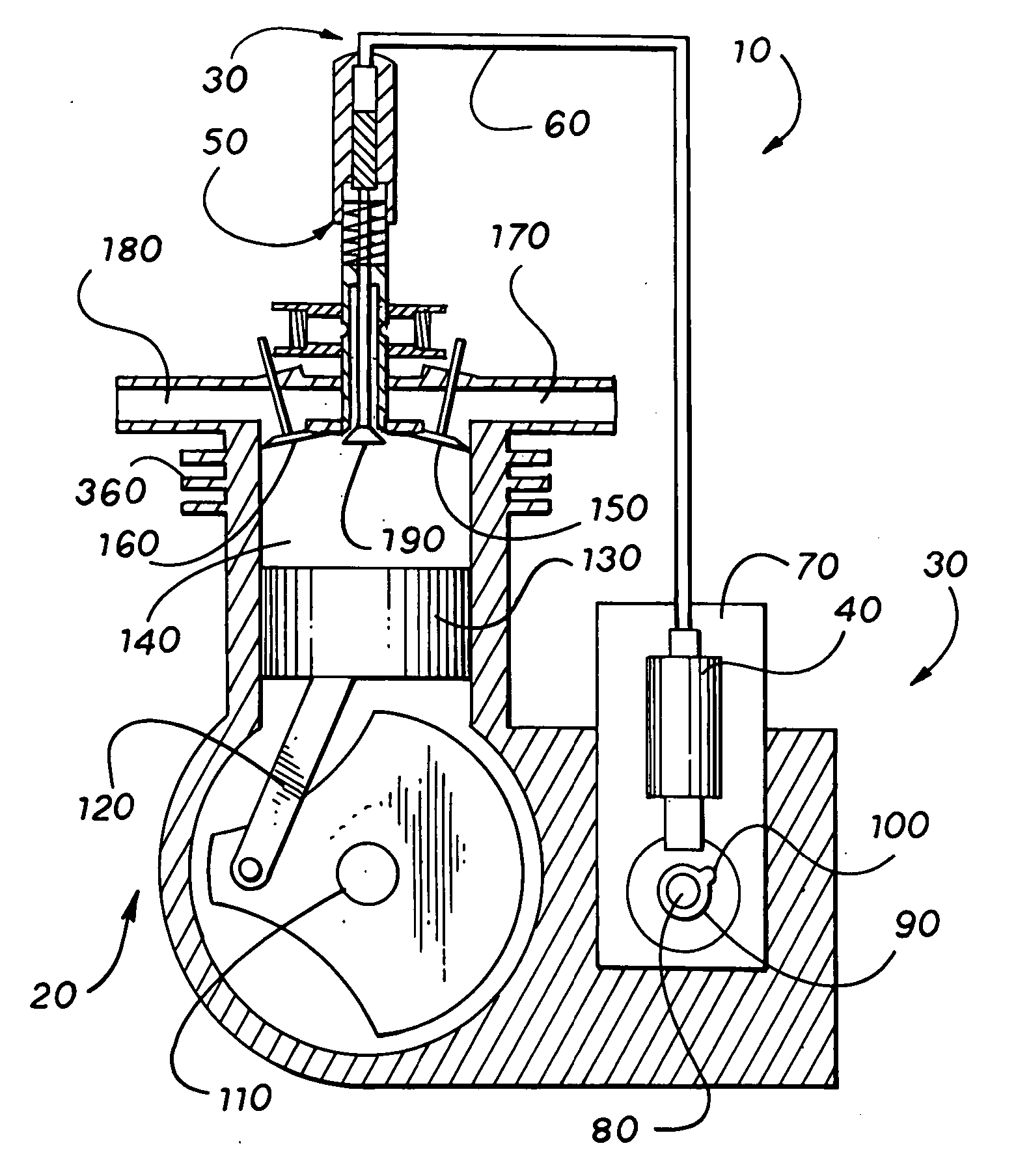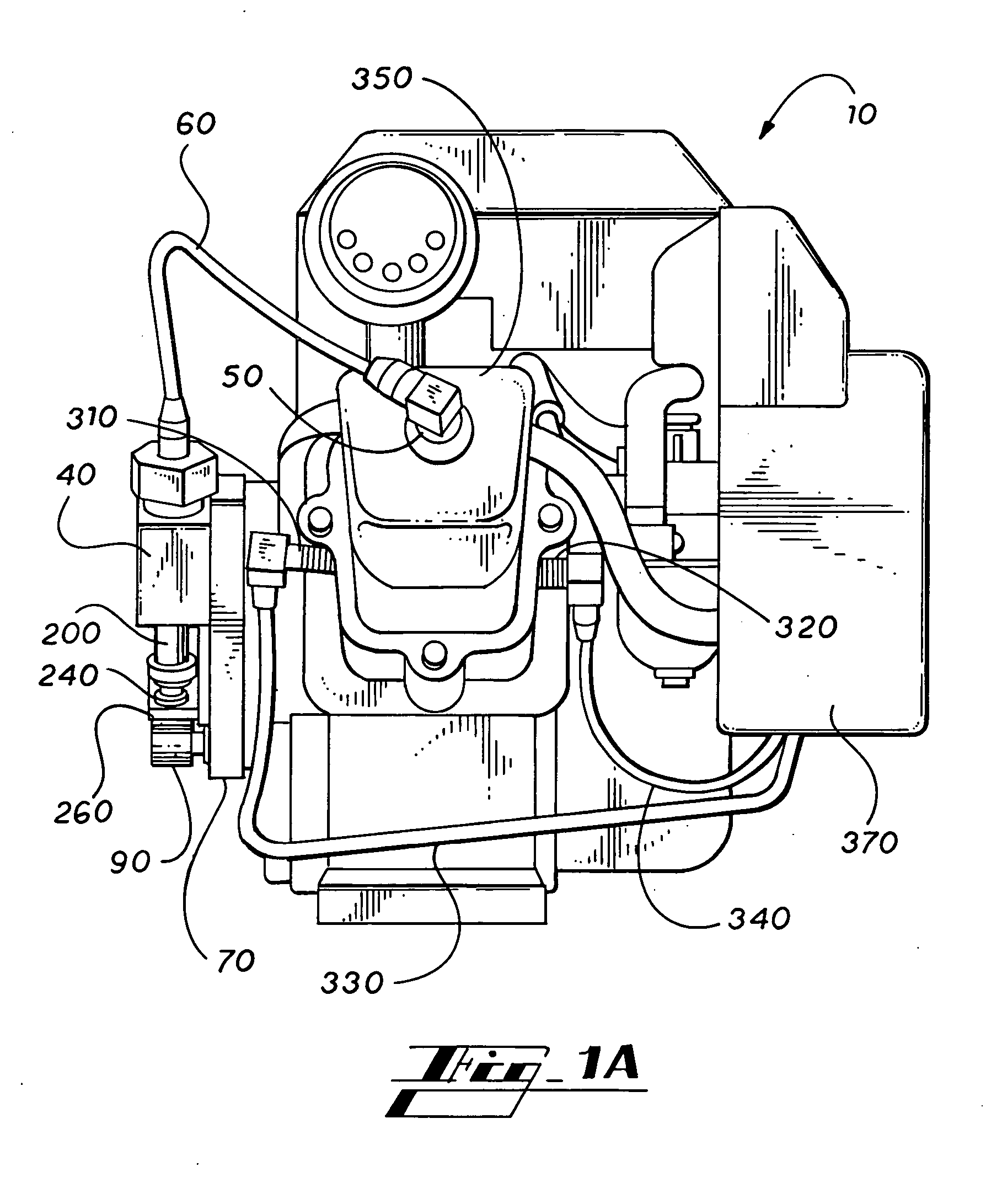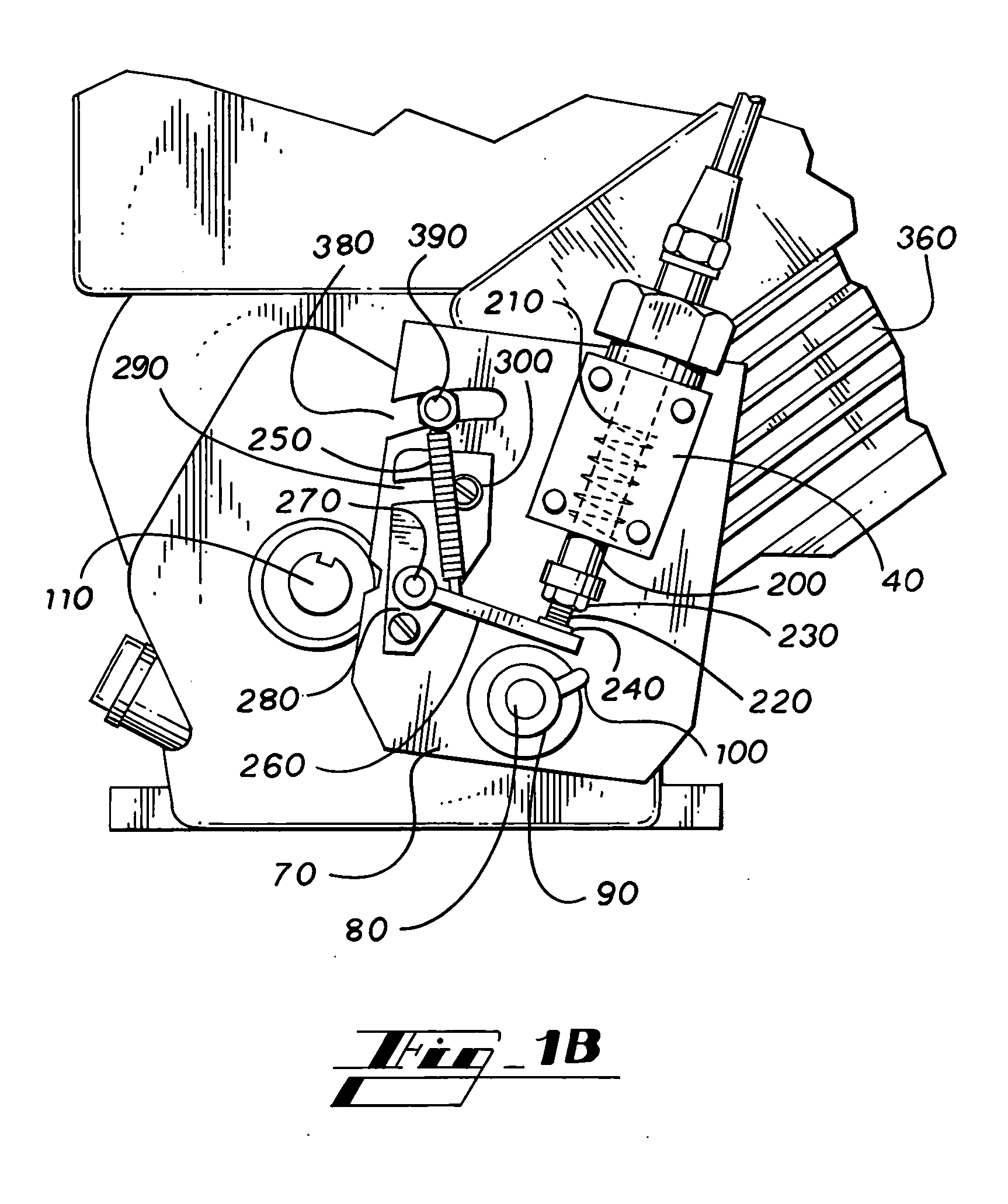Variable compression engine
a compression engine and variable technology, applied in the field of combustion engines, can solve the problems of not being able to adapt to the use not improving the combustion process, and not being able to achieve the adaptation of a different fuel without great difficulty, so as to reduce the maximum compression of an internal combustion engine, selectively utilize different fuels, and achieve optimal energy release
- Summary
- Abstract
- Description
- Claims
- Application Information
AI Technical Summary
Benefits of technology
Problems solved by technology
Method used
Image
Examples
Embodiment Construction
[0051] In describing the preferred and selected alternate embodiments of the present invention, as illustrated in FIGS. 1A-4, specific terminology is employed for the sake of clarity. The invention, however, is not intended to be limited to the specific terminology so selected, and it is to be understood that each specific element includes all technical equivalents that operate in a similar manner to accomplish similar functions.
[0052] Referring now to FIGS. 1A-3, the present invention in a preferred embodiment is variable compression engine 10, wherein engine 10 preferably comprises motor 20 and compression relief valve system 30. Motor 20 preferably comprises crankshaft 110, connecting rod, 120, piston 130, combustion chamber 140, valve cover 350, head 360 and camshaft 80, wherein camshaft 80 preferably comprises cam 90 disposed thereon, and wherein cam 90 preferably comprises cam lobe 100. Head 360 preferably comprises compression relief valve 190, relief valve seat 490, intake ...
PUM
 Login to View More
Login to View More Abstract
Description
Claims
Application Information
 Login to View More
Login to View More - R&D
- Intellectual Property
- Life Sciences
- Materials
- Tech Scout
- Unparalleled Data Quality
- Higher Quality Content
- 60% Fewer Hallucinations
Browse by: Latest US Patents, China's latest patents, Technical Efficacy Thesaurus, Application Domain, Technology Topic, Popular Technical Reports.
© 2025 PatSnap. All rights reserved.Legal|Privacy policy|Modern Slavery Act Transparency Statement|Sitemap|About US| Contact US: help@patsnap.com



